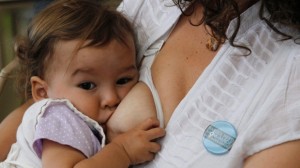Norwegian child protection hits immigrants hard
Norwegian child protection hits immigrants hard
by Aage Simonsen
•••
This article was first published on 4 July 2012 by Pravasi Today in Delhi:
Norwegian child protection hits immigrants hard
Dr.scient Aage Simonsen is a Norwegian biologist who works in nature conservation. He has served on a municipal committee in Bergen monitoring cases prepared by the Child Welfare Service agency, and has written a number of articles on the issue of child protection.
•••
In 1996 Norway was found to have violated human rights in a case concerning a child taken from her mother right after birth in 1989. The European Court of Human Rights (ECHR) decided that the Child Welfare Service (CWS) had committed a grave injustice to the mother. She then hoped that she would at least be given the right to meet her daughter and have contact with her. The foster parents, however, wished to adopt the child, and were upheld in the Norwegian court system after the ECHR verdict in Strasbourg.
Many are surprised at the violations of human rights in Norway. It is hard to understand that a country known for humanity and democracy acts in inhuman ways towards its own citizens. However, Norway is a society with focus on equality. A welfare state has been created which aims at eradicating differences and social dividing lines. In the wake of this initially positive process, an ideology has developed with scant place for deviation and a demand for uniformity allowing little room for being different. The authorities tend to define as negative all circumstances departing from a defined, allegedly optimal, mean. This attitude shows clearly in the child protection system, where everything deviating from a textbook standard is counted as potentially harmful to children.
Such extreme idealisation of equality will often single out newcomers to our country, who grew up and have their roots in other than Norwegian culture. Foreigners are furthermore even less than the rest of the population able to defend themselves against attacks from the authorities. The attention of Norwegian CWS authorities is not only on how adults raise and treat their children but equally on parents’ general appearance, behaviour and reactions. Such characteristics are different in foreigners from what they tend to be in Norwegian-born subjects indoctrinated through the school-system and taught to fit in with more or less firm conceptions of normal and accepted conduct in Norwegian society. Research surveys show that in 75 per cent of CWS cases, problems and behaviour which the CWS claims the parents to have are given as the cause for taking small children into care. Only 6 per cent of the cases were based on the children’s problems.
CWS investigations
If the authorities get the idea that something is not normal in a family (in the sense of “normal” described above), the CWS starts an investigation of the family. The parents’ personalities are measured relative to the norm.
The psychiatric conceptual framework utilised is of a kind that can easily consign most people to some pathological category. This is especially so if the subject is temporarily out of balance because he or she feels abused by the authorities. As the Swedish professor of psychology Lennart Sjöberg has demonstrated, people in such circumstances will often show feelings leading psychologists to diagnose them as “borderline” or “paranoid”. Such diagnoses in turn lead the CWS to conclude that the parents’ ability to care for their offspring is too weak and that the children must be removed from them. Investigators for the CWS consistently look only for negative qualities in parents. Positive resources are not considered; if they are disovered at all, they are often explained away. Thus, a report about a mother said: “Because of her good intellectual functioning and good verbal skills, it is our opinion that her functioning may have been assessed as better than it really is.”
Risk indicators
The method often used consists in describing parents’ background, personality and relationship to their children in terms of a series of so-called strain indicators or risk indicators, such as immaturity, psychological problems, psychosis, psychic retardation, alcohol and drug abuse, and other possible deficiencies and departures from the normal. The lives of the parents are analysed into categories. Along with several other factors, complications such as pelvic distortion in pregnancy and deformities in the child are counted as risk indicators for later failure to care for the child.
External risk indicators comprise housing problems, economic problems, limited social network and problems at work. The fact that these categories are included explains why single parents, recipients of disability benefits, and immigrants are parent groups in special danger of being deprived of their children. They are among those with the weakest economy and least energy to take part in social life and societal concerns.
Parents’ alleged self-esteem as an indicator is given great importance, in spite of the lack of scientific evidence for any correlation between self-esteem and child abuse. In California the state administration had a research group investigate how important problems could be solved by “increasing the self-esteem of the population”. This task force went through 65,000 research articles in psychology dealing with self-esteem. The result was published in the book The Social Importance of Self-Esteem in 1989. The chapter dealing with child abuse and care failure concludes that there is no documentation for allegations of any connection between low self-esteem and child abuse. The team found no basis for claiming that higher self-esteem would reduce abuse and neglect of children. Nor was any connection found between low self-esteem and aggression or violence. – Although several hundred studies surveyed showed no such correlations, our CWS still claims that there is a clear correlation between failure to give care and low self-esteem, which therefore counts as a risk indicator in assessing whether children are to be deprived of their parents.
Immigrants in Norway are often branded with “low self-esteem or lack of self-confidence” through the attitudes they are met with in Norwegian society. This alleged risk indicator is therefore liable to be salient in this section of the population.
Certain risk indicators are thought to predict better than others and the sum total diagnosed for a parent will be a strong factor in the decision made by a social worker of whether to take the child into care.
Observation, tests and prognoses
To work out an assessment of the parents’ ability to give care, they are observed by social workers in their home. Unfortunately it is rarely possible to check what kind of methods of observation are used. Several problems follow. Since observer and observed are living individuals who influence each other and each with attitudes and prejudices, “observation” is no clearcut activity and this objectivity question must be taken into account.
Such problems are standard and have to be accounted for in any methodologically acceptable study in any social science. They do not seem to be, though, in the view of CWS personnel. Their observations do not take place under natural conditions but in situations where those being observed are nervous, upset, or for other reasons cannot be expected to behave naturally. These confounds are ordinarily not mentioned in CWS reports, nor are observers’ effect on observed discussed. In many cases these deficiencies have led to misinterpretations which have contributed to creating the case for CWS intervention.
CWS psychologists utilise personality tests in their work. Based on the results of these, drastic conclusions are drawn about the client. This in spite of well-known facts: such tests have been shown not to measure what they pretend to measure, and they are completely unable to predict future events and future actions.
For the CWS to find so-called risk indicators in parents’ lives back to their childhood, the parents are subjected to more or less “clinical” interviews and observations by psychologists chosen by the CWS. The psychologists come up with prognoses for ability to give care, future care failure, relapse into psychiatric illness, etc. Such predictions based on interviews have turned out to be problematic and in USA several studies have shown them to be largely incorrect.
That being so, the value of such pronouncements is not great. Nevertheless the CWS draws its conclusions regarding future performance as parents on the basis of such tests and interviews.
Seeing the CWS in practice
For some years I served on a municipal committee in Bergen. The task of the committee was to go through CWS cases before they could be taken to the social board or the courts. I have consequently read a quantity of case documents from such cases.
Around 80 per cent of the CWS’s decisions to take children into care were based on claims to have diagnosed deficient parental ability to give care, so that there might be a care failure some time in the future. In only few cases was present care failure documented. In no case was there any documentation of actions that could be labelled child abuse.
There were statements and accusations by the CWS against parents which, when investigated, turned out not to be true. An example is that of a mother who had a spot on her cheek when she came to a meeting at the CWS office. The CWS records this in her file. By the time a report arrives on the municipal committee’s table, the CWS has changed it to a black eye (insinuating violence in the home). In another case, a social worker writes that the mother drinks and that one should find out whether the father has alcohol problems also. Later in the same report, written on the same day and with no investigation having been carried out, the social worker claims that the father drinks a lot. In yet another case, from a neighbouring district, the mother, being interviewed about her childhood (no doubt for the purpose of finding “risk indicators”, cf above), had said that she had as a girl had a fine summer holiday at a summer camp for children at Hjellestad outside Bergen. In the report this had been changed to a statement that she had been treated at the Hjellestad clinic (an institution treating people with problems relating to alcoholism and drug abuse).
The CWS wants to control every aspect of the lives of a foster child, to make sure that it follows the plan they have drawn up. Since the CWS considers frequent contact with biological parents to be negative for children’s “attachment” to new “care givers” once they are placed in foster homes, the right for parents and children to meet is cut down to a minimum and the plan is for the children to remain in foster homes until they are grown up. The need for control means that other close relatives are not considered as foster parents, except in cases where the fosterers are made to consider the biological parents enemies.
In sum there is reason to say that CWS methods of working are more than criticisable and have a very poor scientific basis. It is abundantly clear to me from my experiences on the municipal committee and from research literature that the Norwegian Child Welfare Service does not serve the population with welfare in the humane and competent way intended by the law and by international conventions Norway has signed.
**
_________________
Hjemmeside http://www.mhskanland.net

